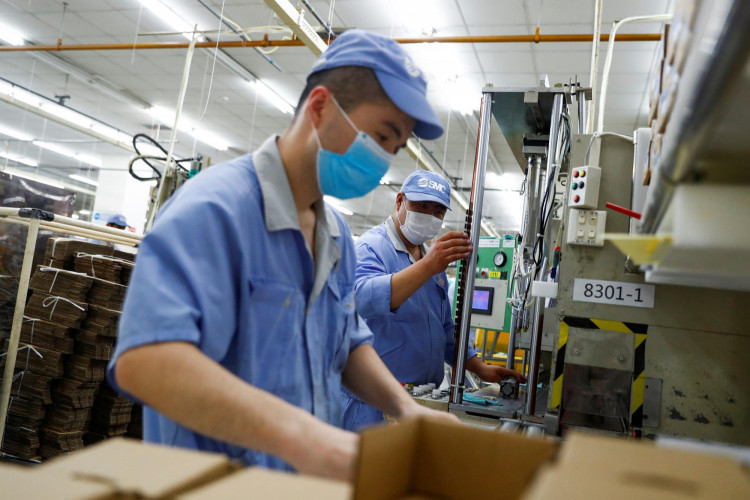China's manufacturing activity contracted at its fastest pace in 23 months in January, underscoring the country's massive economic costs associated with its zero-COVID-19 policy as surging cases and stringent containment measures weighed on output and demand, a private survey showed on Sunday.
The official manufacturing Purchasing Managers' Index (PMI) registered 50.1 in January, remaining just slightly above the 50-point threshold that separates growth from contraction but slowing from 50.3 in December, according to data released Sunday by the National Bureau of Statistics (NBS).
The unexpectedly low reading is likely to reinforce market expectations that policymakers will need to implement additional stimulus measures to shore up the economy.
China's central bank has already begun lowering interest rates and injecting additional liquidity into the financial system in order to reduce borrowing costs, and additional modest easing measures are expected in the coming weeks.
The subdued PMI indicates that the government's policy easing measures have not yet trickled down to the real economy, according to Zhiwei Zhang, chief economist at Pinpoint Asset Management Ltd.
A sub-index for factory output was 48.4, down from 52.7 in December, as firms surveyed reported lower new business intake and production was impacted by a recent surge in COVID-19 cases and strict anti-virus measures, the survey found.
Demand also fell, with new orders falling at the fastest pace since August and export orders contracting at the fastest pace since May 2020. Exports were one of the economy's few bright spots in the second half of last year.
This resulted in renewed pressure on the labor market, with a key indicator of employment falling to its lowest level in nearly two years.
Bloomberg Economics forecasts that downward pressures on the economy will persist in the near term, with restrained celebrations surrounding the Lunar New Year weighing on consumption and production remaining in low gear.
The authorities have made a dramatic shift in their approach in order to increase policy suppo,rt. This should mitigate the slowdown, but the effect may not be apparent until late in the first quarter, when LNY-related activity distortions have subsided.
In January and February, Chinese factories frequently experience a production lull as workers return home for the Lunar New Year holidays.
This year's activity has also been impacted by the government's order for steel plants to reduce output in order to slash air pollution ahead of the Beijing Winter Olympics, which begin Friday.
The world's second-largest economy started strong in 2021, rebounding from a pandemic-induced slump in 2020, but began losing steam in early summer.






